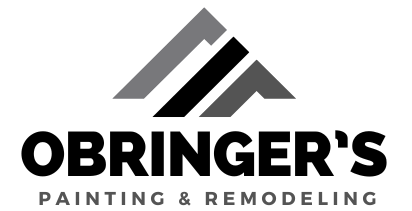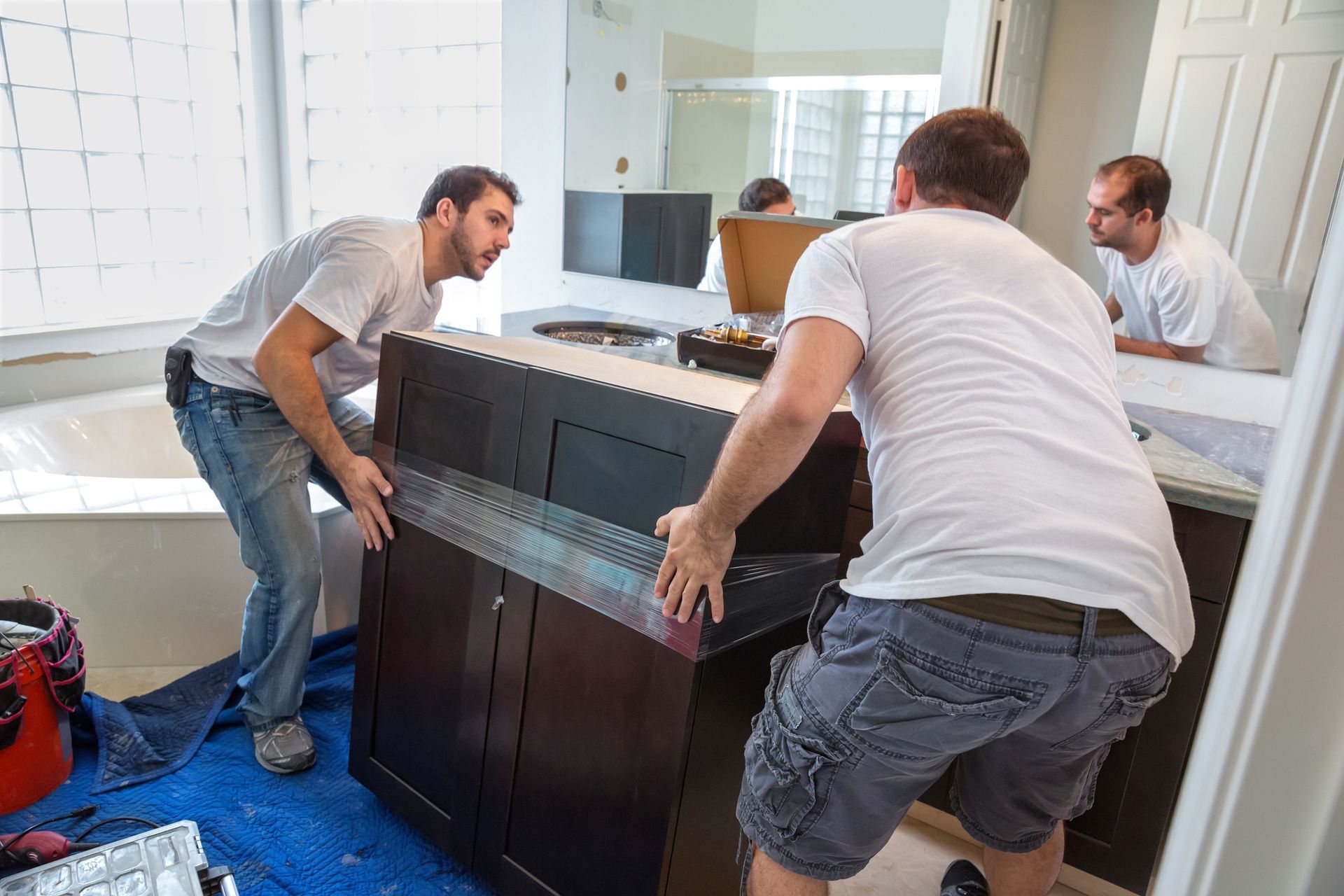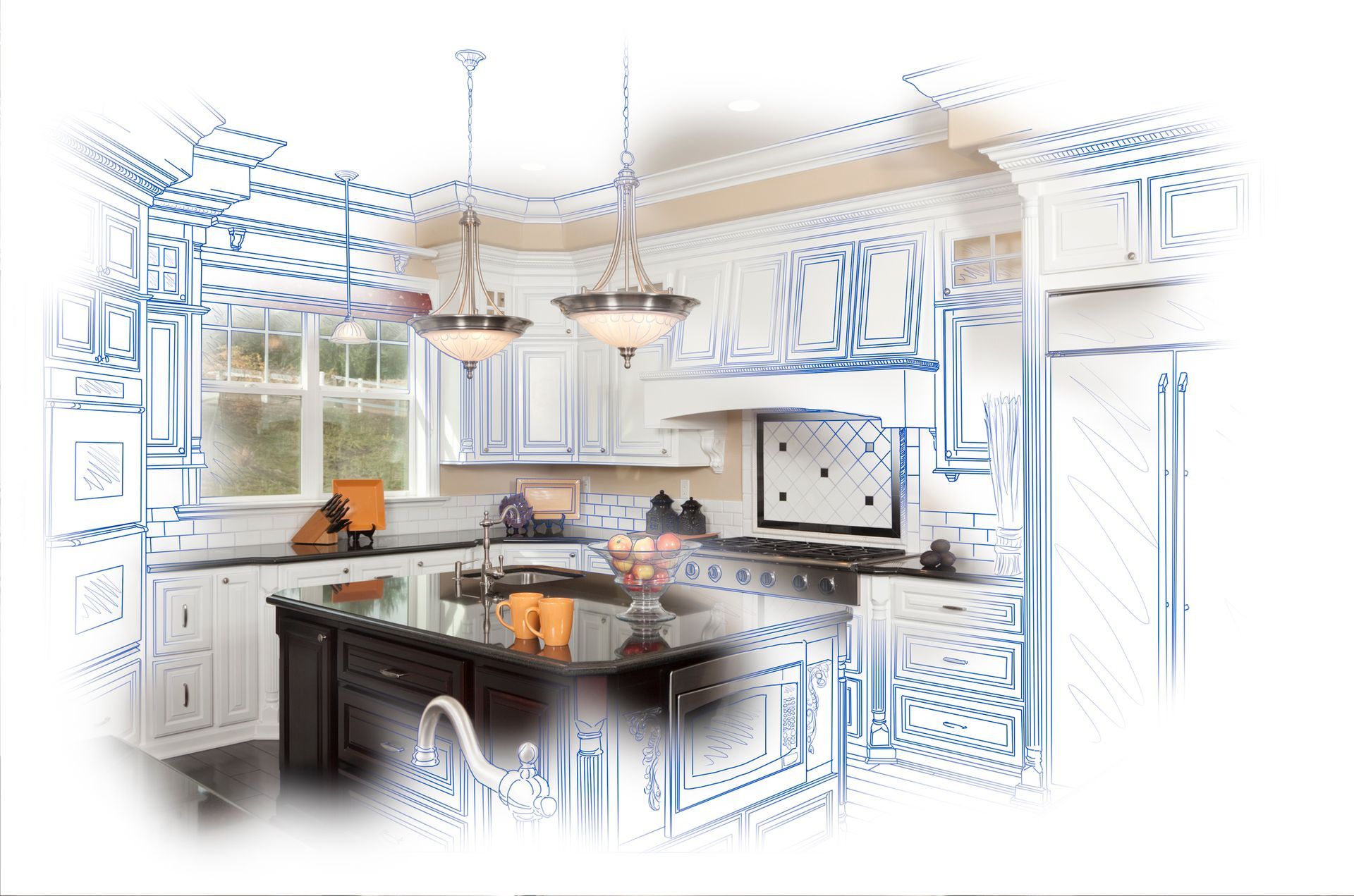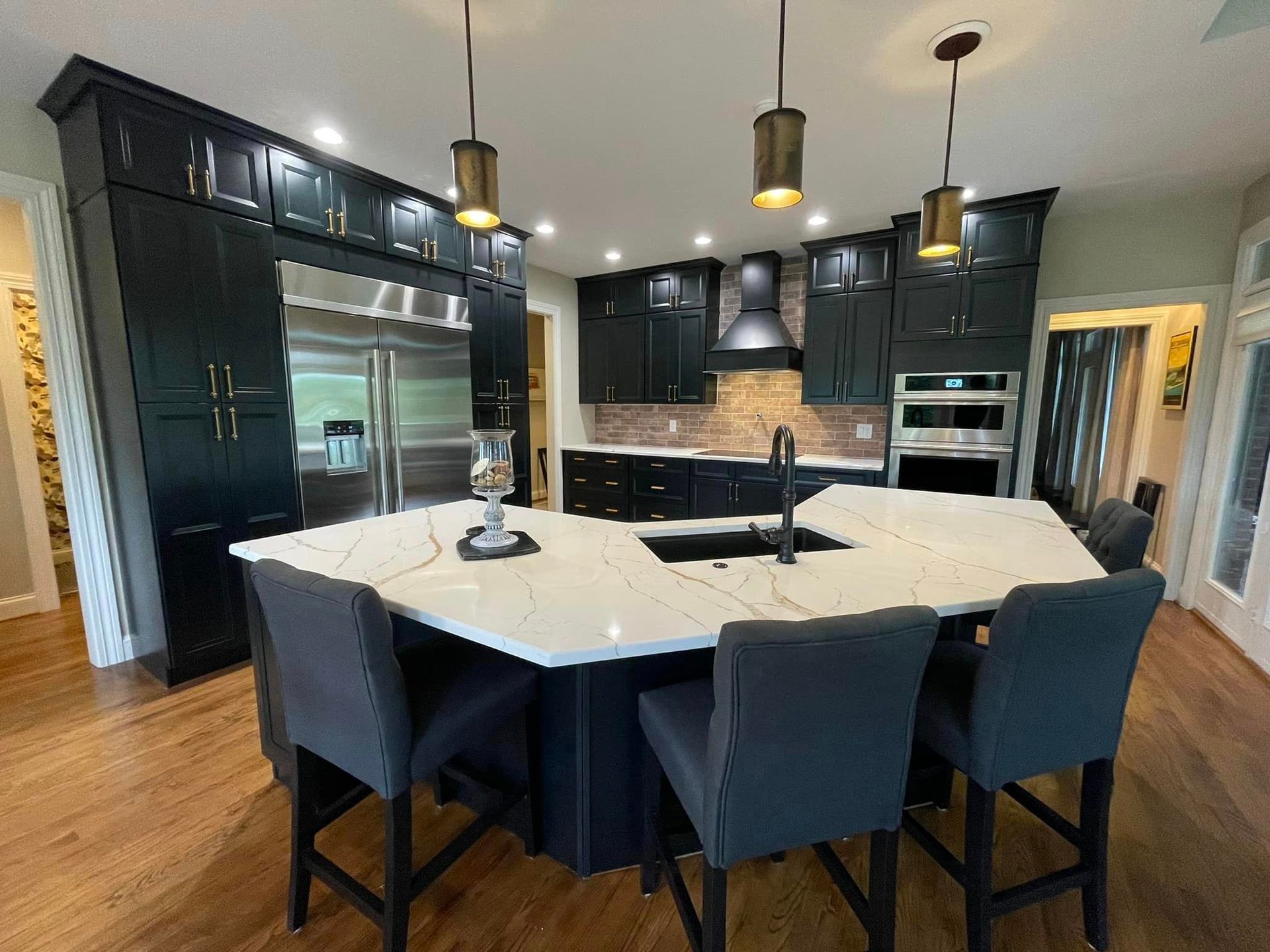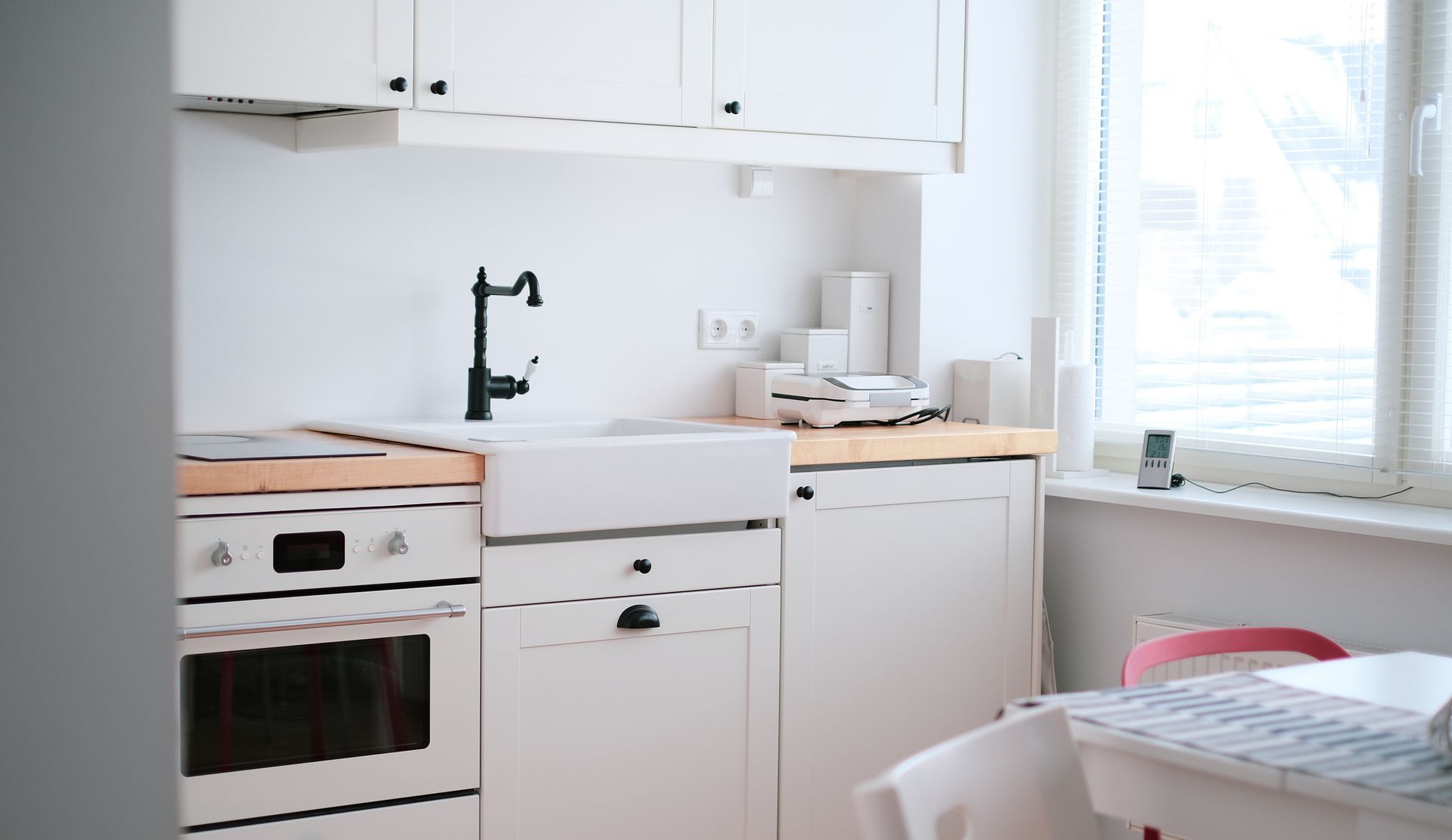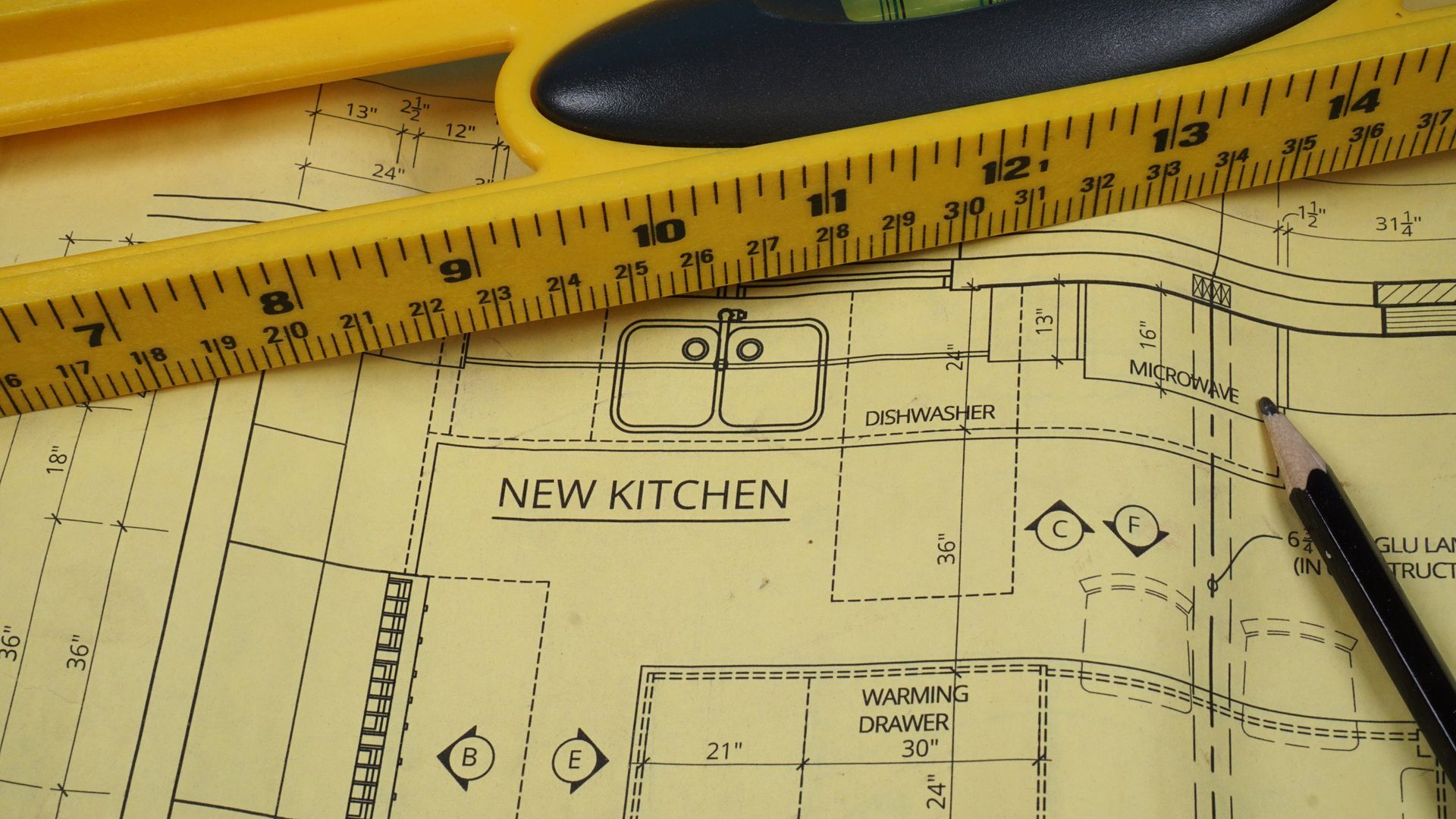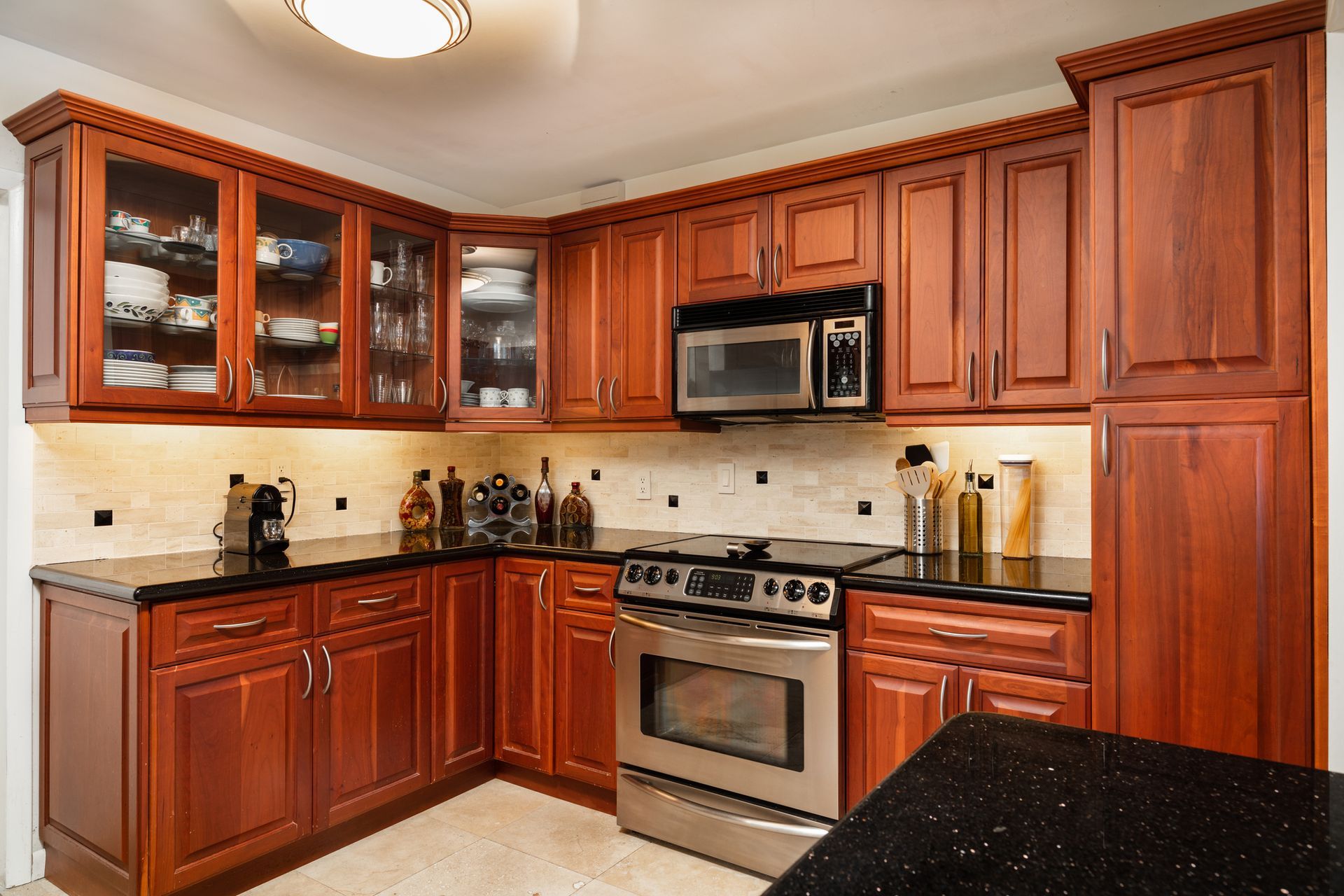Kitchen Cabinet Anatomy Explained For Home Owners
Kitchen remodeling is one of the most transformative projects you can undertake in your home. Whether you're updating an outdated design or customizing your dream kitchen, cabinets are a central feature that plays both a functional and aesthetic role. Yet, many homeowners find themselves confused when contractors discuss specific cabinet components. Knowing the parts of your kitchen cabinets can make planning easier and ensure clear communication with your remodeling team.
At Obringer's Painting & Remodeling, we believe an informed client makes the best decisions. Let’s break down the essential parts of a kitchen cabinet to help you confidently navigate your remodeling journey.
The Anatomy of a Kitchen Cabinet
Kitchen cabinets may look like a single unit, but they are made up of several components, each with a specific purpose. Understanding these parts will not only simplify discussions with your contractor but also help you choose the best materials, designs, and configurations for your needs.
By default, the part of the cabinet that is being discussed will be highlighted. If you are on desktop, you can hover over it to see the unedited image. On mobile you can press and hold on the image. Let's take a look at the parts of an example kitchen cabinet setup.

Cabinet Box
The cabinet box is the foundation of your cabinets. It includes the back, sides, bottom, and sometimes a top, forming the main structure that holds all the other components together. Cabinet boxes can be constructed from various materials, including:
Solid Wood: The most durable wood cabinet material.
Plywood: A durable, quality option for long-lasting cabinets.
Particleboard: An economical choice, though less robust than plywood.
MDF (Medium-Density Fiberboard): A smooth, budget-friendly material ideal for painted finishes.
The strength and quality of the cabinet box determine the overall durability of your kitchen cabinetry.

(Tile in the bottom left more accurately depicts face frames.)
Cabinet Face Frames
Cabinets come in two primary styles:
- Face Frame Cabinets: These include a wooden frame that outlines the front of the cabinet box, providing extra stability and a classic look.
- Frameless Cabinets: These lack the front frame, allowing for a sleek, modern appearance and greater access to the cabinet interior.
Understanding these styles can help you align your choice with your kitchen’s aesthetic and storage needs.

Cabinet Doors
The door is the most visible part of your kitchen cabinet. It defines the style and contributes significantly to the overall design of your kitchen. Cabinet doors are available in various styles, such as:
- Shaker: A simple, timeless design with a recessed center panel.
- Flat Panel: A sleek, minimalist choice for modern kitchens.
- Raised Panel: A classic, ornate option featuring a raised center.
Materials and finishes for cabinet doors range from solid wood to painted MDF, allowing for versatility in design.
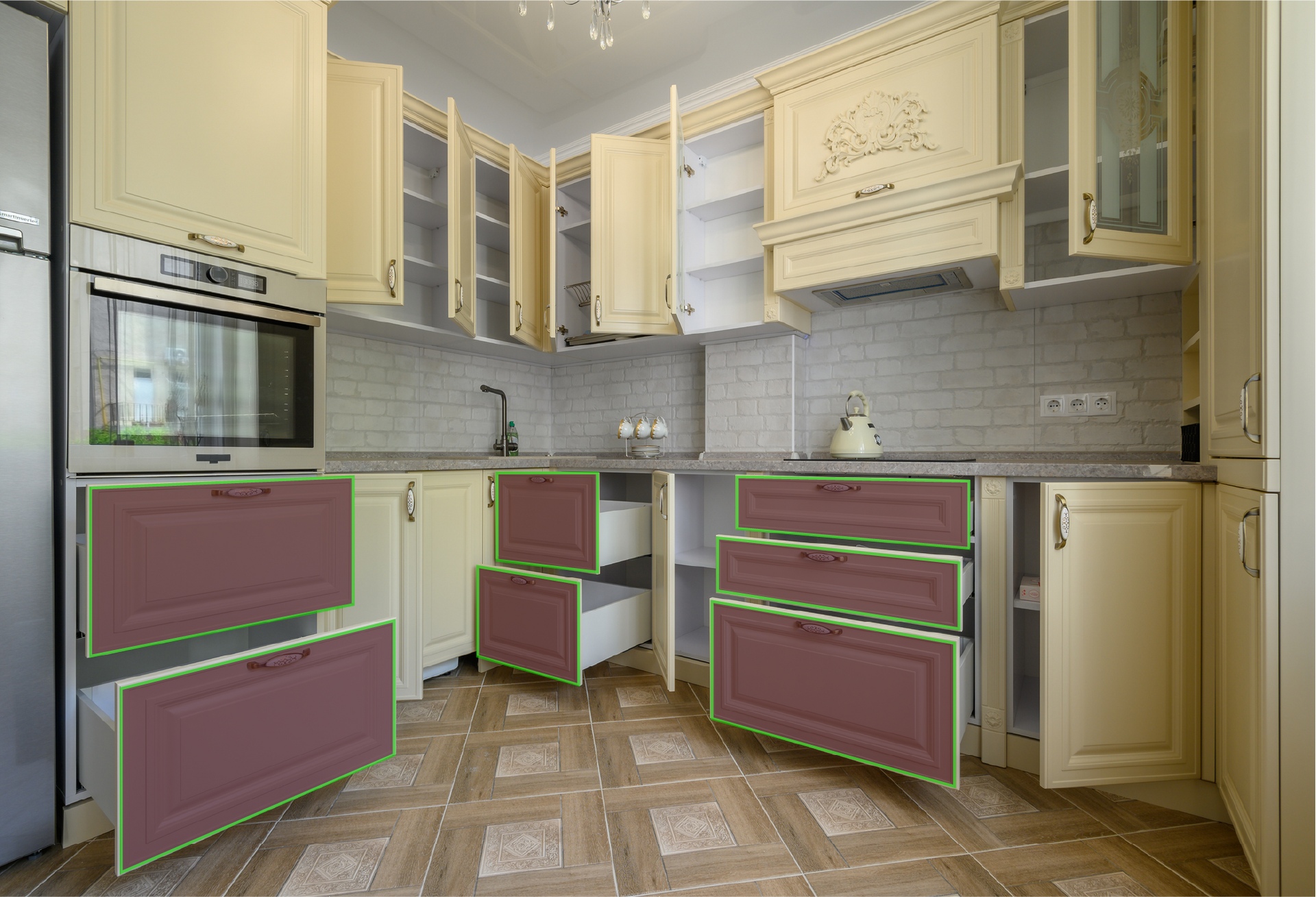
Drawer Fronts
Drawer fronts complement cabinet doors and contribute to the cohesive appearance of your cabinetry. Like doors, drawer fronts can be customized with various designs and finishes. Whether you prefer soft-close mechanisms or more traditional hardware, drawer fronts must combine aesthetics and functionality.
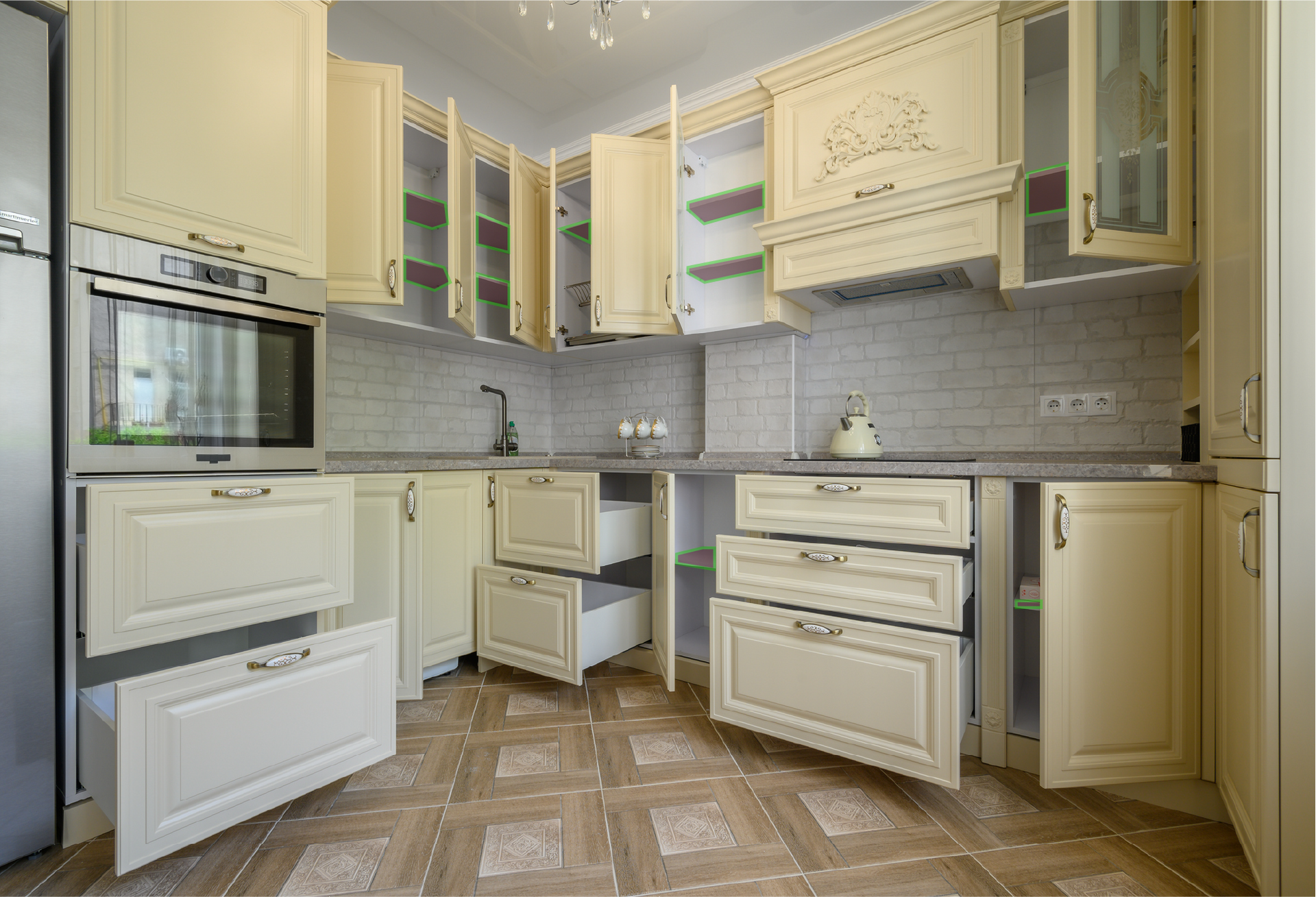
Cabinet Shelves
Inside the cabinet box, shelves provide storage space for your kitchen essentials. They can be fixed or adjustable, with common materials including plywood, MDF, and laminate. Adjustable shelves allow you to customize the interior based on the size and shape of your items.

Cabinet Hardware
Cabinet hardware includes the knobs, pulls, and hinges that allow you to open and close doors and drawers. Hardware comes in a variety of styles and materials, including:
Knobs: Round or square pieces attached to doors or drawers.
Pulls: Longer handles offering a sleek, modern look.
Hinges: Visible or hidden mechanisms for door movement.
Drawer Slides: Though none are depicted here, drawer slides are the metal pieces that enable your drawers to open and close with ease.
Selecting the right hardware adds a finishing touch and can enhance the functionality of your cabinets.
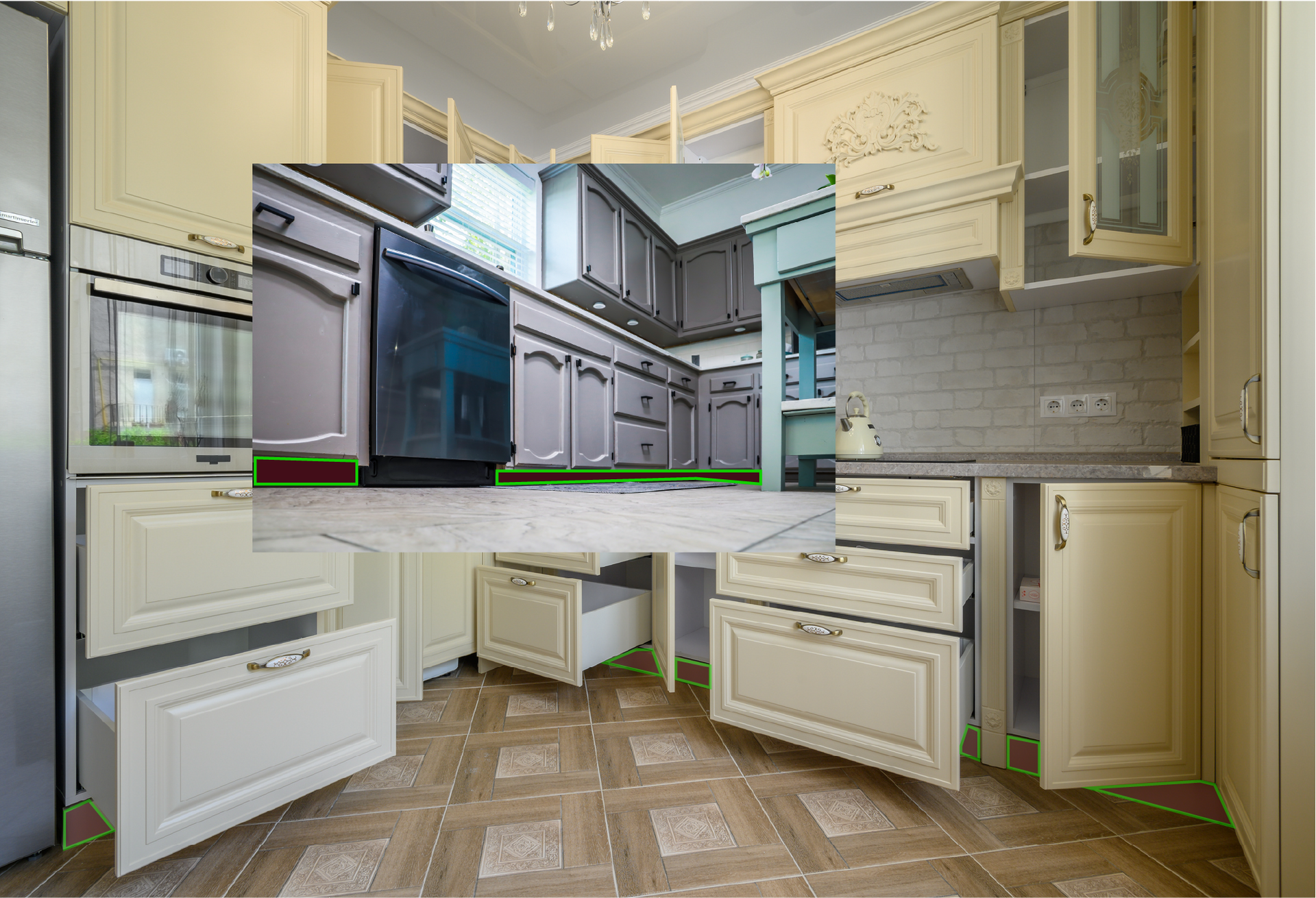
Toe Kick
The toe kick is the recessed area at the bottom of the cabinet that allows for comfortable standing while working at the counter. It is a small but essential design element that improves ergonomics and can be customized with decorative touches. We have included a tile in the center of the image that shows a more recessed toe kick than the main example.
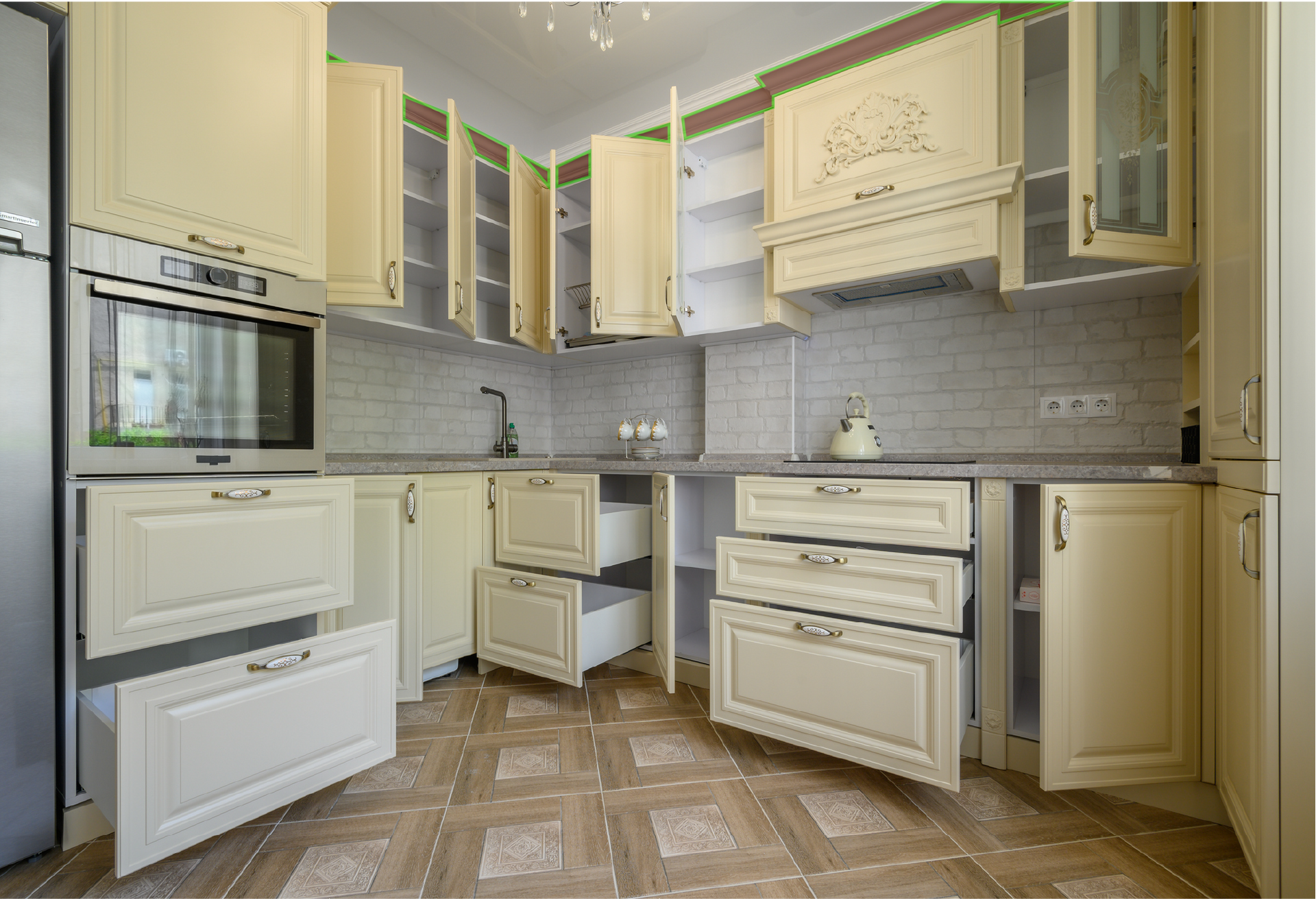
Molding & Trim
Molding and trim add a polished, finished look to your cabinetry. Options include:
- Crown Molding: Decorative trim at the top of wall cabinets.
- Base Molding: Installed along the bottom for a seamless transition to the floor.
- Light Rail Molding: Used under wall cabinets to conceal under-cabinet lighting.
Molding and trim can increase the aesthetic of your kitchen and tie your design together.
Choosing the Right Cabinet Components
When selecting cabinet components for a
kitchen upgrade, it’s essential to consider your needs, budget, and overall kitchen design. Here are some tips to guide your decisions:
- Prioritize Durability: Invest in high-quality materials for long-lasting performance, especially for cabinet boxes and doors.
- Consider Style: Choose door and drawer front designs that align with your kitchen's theme, whether modern, traditional, or transitional.
- Maximize Storage: Opt for adjustable shelves, pull-out drawers, and other innovative storage solutions to keep your kitchen organized.
- Finish Smart: Durable finishes like laminate or painted wood protect your cabinets from spills, stains, and scratches.
- Don’t Skimp on Hardware: High-quality hinges and pulls ensure smooth operation and add an elegant touch to your cabinets.
Why Knowing Cabinet Parts Matters
Understanding the anatomy of your kitchen cabinets empowers you to:
- Communicate Effectively: Talk confidently with contractors about your preferences and options.
- Plan Accurately: Make informed decisions about layouts, styles, and features.
- Stay Within Budget: Recognize where to splurge and where to save, ensuring a balance between quality and cost.
When remodeling, your cabinets are a long-term investment. Proper planning and understanding of their components can help you achieve a kitchen that is both beautiful and functional.
How Obringer’s Painting & Remodeling Can Help
At Obringer's Painting & Remodeling, we specialize in creating customized kitchen solutions tailored to your unique needs. With years of expertise in painting and remodeling, we know how to bring out the best in your space by using high-quality materials and precise craftsmanship.
Our team understands that cabinets are a vital part of any kitchen remodel. From helping you select the right materials and finishes to ensuring perfect installation, we guide you through every step of the process. Whether you're seeking a modern, minimalist look or a traditional, warm aesthetic, Obringer's Painting & Remodeling combines skill and experience to make your dream kitchen a reality.
Let us share our knowledge and expertise to give you a kitchen remodel that exceeds your expectations. With Obringer’s, you can be confident that your cabinets—and your entire kitchen—will be both stunning and built to last. Reach out to us today to start planning your kitchen transformation!

Author: Derek Obringer
Owner & Founder of Obringer's Painting and Remodeling, Derek Obringer brings attention to detail, together with experience, and superior customer service into each and every home that his company does work.
Painting And Remodeling Blog

